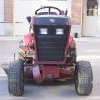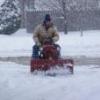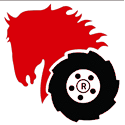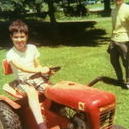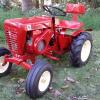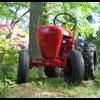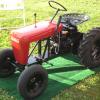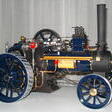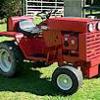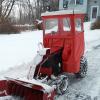Leaderboard
-
in all areas
- All areas
- Markers
- Marker Comments
- Marker Reviews
- Articles
- Article Comments
- Article Reviews
- Classfieds
- Classified Comments
- Classified Reviews
- Wiki's
- Wiki Comments
- Wiki Reviews
- Blog Entries
- Blog Comments
- Images
- Image Comments
- Image Reviews
- Albums
- Album Comments
- Album Reviews
- Files
- File Comments
- File Reviews
- Posts
-
Custom Date
-
All time
November 28 2011 - November 26 2025
-
Year
November 26 2024 - November 26 2025
-
Month
October 26 2025 - November 26 2025
-
Week
November 19 2025 - November 26 2025
-
Today
November 26 2025
-
Custom Date
11/05/2014 - 11/05/2014
-
All time
Popular Content
Showing content with the highest reputation on 11/05/2014 in all areas
-
6 pointsI own 12 tractors. If you were to ask my wife, she would tell you she doesn't know how many tractors I have and doesn't care. I recently finished restoring one and all she said was that's nice. We have been maried for 49 years and we have learned to give each other some space from time to time. She will come out to the shop sometimes and sit while I work on something but mostly she just makes sure I am OK and brings me coffee, ice water and lunch. I have to get my own beer.
-
6 pointsWow Vin I could comb my hair in the shine on that hood , only I ain't got any hair
-
5 pointsHeh! I'm real close to Nicks relationship - my wife will say 'thats nice' also and go on about her interests, but yet will give me all the encouragement I could want to keep on doing what I love. At 55 years we have a pretty darn good thing going :) I have 4 running and a roller and if I were to find something tomorrow 100 miles away she'd just say "call your buddy (groundhog) and y'all go get it"
-
4 pointsPenn St., Iowa, Wisconsin, Whichigaahahaack, Ohio St. Sorry guys, no brownies this week. My dog found em..
-
4 pointsI posted earlier with my 314-8 that I will be using. I just picked up a Cab off CL thanks to Doc724 who gave me the heads up on it! So I thought I'd post a few new pictures.
-
3 pointsJust bought this to replace one of my 74' C-160's I stupidly sold last year. Came with a deck, snow blade and tiller for $600. Question: there isn't a hood ornament on this. Did they not put them on in 77', which I beleive this is. BTW: it's staying exactly how you see it except for the seat. It took thirty-something years to get this great and I love it!
-
3 points
-
3 pointsheres a little keyring i made by casting metal into a laser cutted wooden mould, i thin it turned out ok, let m know what you think? james
-
3 pointsAfter all this chatter I figured I need to do a little more investigation on the claims made in the post. A little poke here and another one there .... let's go back and check that once again, and all of a sudden you have the same issue but now your wiring harness feels like this guy feels. I decided to finally break out my wire piercing adapters I have had in storage for years [never used]. After having to repair several harnesses that had green powdery buildup, bulges in the insulation and stretched an inch or more under tension, and after hearing statements the pierce probes "do no damage 'cause the wires heal themselves", out came my unused set of adapters. I purchased these adapters many years back for that "just in case" event. These are Pamona / Fluke brand adapters which allow the user to adjust the depth of the piercing point into the wire. The adapter is placed on the wire with the screw adjustment all the way out, and you slowly turn the adjustment until the needle probe just pierces the insulation. This feature alone is worth the higher price tag these adapters command. These adapters also have a much thinner diameter probe, leaving a much smaller indentation than less expensive probes. I figure these would do less damage than almost all other probes on the market. http://www.amazon.com/INSULATION-PIERCING-CLIPS-PACK-OF/dp/B00HB7ETXY/ref=sr_1_15?ie=UTF8&qid=1415180991&sr=8-15&keywords=pomona+piercing+probes Two different types of wire were pierced in effort to prove or disprove the "self healing" statement. All these experiments were performed over two weeks ago while the crickets were chirping. Two + weeks later, I don't see any evidence of self healing on either the marine grade 14 awg wire or the automotive quality 22 awg wire shown in the pics below. Next comes the dunk test in salt water to see if any portion of the pierce has the ability to seal out the environment. Results will be posted shortly.
-
3 points
-
2 pointsI think I'll start with my story --I've been looking for one of these "little tractors" for about 5 years now, about when I got into "tractorin'." I'm a senior in high school, and am working towards selling off my collection or tractors --but I've still been on the hunt for an RJ or short Suburban. They're simple, and easy to store --and I'm in love with light, low-hp tractors. I've been hoping to find one to restore so that I don't have to completely get out of tractoring during college. I finally came across this tractor, in mid-restoration, about an hour from my home and did some horse-trading to get it. I'm very happy with my purchase. Now, for the questions and then pictures: First, is the pictured rim correct for a '58? Second, is the pictured belt guard correct --if not, I'd be willing to do an even trade for a correct one? Third, does anyone know what this engine would have been on originally? It's a li'l Techy. It has a gear-starter flywheel, and recoil. I prefer the look of the K-91s, so if I can find one reasonably --I'll pounce on it or trade. Fourth, is the exhaust pipe on the Tech. the correct one for the tractor? (Minus the last elbow, of course.) Fifth, the tires on the rear are BFG Power-Grips Garden Tractor tires --original? Sixth, what are the measurements for the tie-rod? Mine is a hack job, with tons of toe-in. Tractor and deck are complete, minus the exhaust guard --Have the original rims, but the tires are shredded. Thanks for looking and any help! --I'm looking to finish/do the restoration again. Hoping to go through the trans, and do a nut-and-bolt. Also have a set of WH hubcaps I'd like to restore for it.
-
2 points
-
2 points
-
2 pointsYou're doing a great job!! Yeah it's never easy but ... just think how much history you're preserving.... Will be watching for your next update
-
2 pointsThe fuel cock and grommet are under the tank on the back of the tractor - the gas tank needs to be empty to change these unless you fell like playing Tom Thumb. Part 24 and 25 here http://www.partstree.com/parts/?lc=toro_consumer&mn=21-10K805%2C+310-8+Garden+Tractor%2C+1988&dn=810547R1-47R10048-00022
-
2 points
-
2 points
-
2 pointsSo, it took me longer than I thought it would to get pictures, but here is the Winterforce 2014/2015! The D-250 will only be brought out if large amounts need to be moved, and not during a storm, I may try to put my 48" blade on the 1277, but I don't know if the frame is much different than the newer style mount and will work, I'll check it out. And I'm going to add wheel weights on the 310-8 and use it without chains to see how the Carlisle All Trail's work by themselves. Can't wait for snow!!
-
2 pointsJust a thought. You probably should not use "starting fluid" into the carb on these low compression engines. Use "carb cleaner" instead. It is less volatile.
-
2 points
-
2 pointsMy dog ate a whole pan of Brownies many years ago. We were ready to leave for the Watkins Glen Nascar race and it was like where did all the brownies go? My sister had a dog that ate 2 pies my mother had out for Christmas Eve. Steve, I sent you some reinforcements to help with your picks!
-
2 points1" by 3" long. That should do it. But,,,,,,,,,,,,,,,there is always the unknown extra stuff. Lol
-
2 pointsFor the official GRAND OPENING maybe a fire pit outside at night with some dancing girls on the balcony outside the Hayloft Lounge? Always nice to dream.... Seriously though, what a treasure! I know how hard you have worked to make the Iron Horse Barn happen.. I should be able to make it Saturday...
-
2 points
-
2 pointsGlen, that is a swap I would do in a heart beat, no biggie to do it either. You will thank yourself for not getting involved in the Techy. You'll have no engine runnin dizzy headache's too fix, more power, less oil burnin and a better all around engine. While the 500 is a nice tractor to find it ain't a Hemi Super Bird or a Corvette Stingray where originality is a must... Sounds like a win win to me! You can make it look 100% original and that would be very cooll, half the guy's out there won't know the difference anyway. Or... you can answer this call.. JERSEYHAWG Glenn!! Cleanup in aisle 7!!! We have a 6hp Techy that has thrown its rod and we have oil all over the place!!! Sorry Techy guys... it happens..
-
2 pointsInteresting enough, I stumbled across a few informative posts in magazine articles targeted at the professional troubleshooter in today's automotive arena. Some techs have no qualms about piercing a wire’s insulation any time--or any place on a vehicle. Yes, there are piercing tools that inflict minimal damage to the insulation. Yes, you can treat the pierced insulation with something like nail polish, liquid tape or something similar after the fact. However, I’m well acquainted with snowy weather, road salt and the impact of both on electrical wiring. I have fixed my share of wires and connections that road splash and salt destroyed. Often, visual inspection suggested that the wire’s insulation was damaged or compromised somehow. Sometimes it takes a while for symptoms to appear. By the time the owner brings the vehicle in for diagnosis, the copper strands inside the damaged insulation have disintegrated into a greenish powder! Consequently, I don’t pierce a wire’s insulation unless there’s simply no other way to make the voltage measurement. Instead, I backprobe connections wherever possible. I’ve been using the backprobes sold by Automotive Electronics Services (www.aeswave.com) for years. Likely, these are among the most popular ones on the market. Foreign Service By Dan Marinucci | October 2012 Motor Magazine. and from the supplier of automotive wiring and lighting products Water wicking is a term describing how water can travel internally through and along wires due to some of water’s very strong properties. When water seeps into very small cracks and seams in connectors and wires, it uses adhesion cohesion and surface tension to stick to things. Through high adhesion, water’s “sticking†property, water will hold to surfaces, just as rain sticks to the surface of clothing (rather than completely running off). It is in this manner that water sticks to the copper in harness wiring well, and gets into the small places between the wires and the insulation. Water’s high cohesion properties cause it to bead up and, and through surface tension, it will stick to itself, as shown on a newly waxed car. Water that gets pulled into the small spaces in wiring, between the wire and insulation, drags along more water because it sticks to itself well. The problem escalates when these properties propel the water up the wire far more than the level the connector may have been immersed to begin with. Water can travel great distances by wicking, sometimes causing corrosion along the entire length of the wire. This is the most damaging form of corrosion because it can be slow and difficult to detect until a failure has occurred deep in a wire. It can damage the whole wire length, and when the harness eventually fails, the entire length must be replaced. Sometimes corrosion can appear in the middle of the harness due to a break in the insulation from road damage, or through the use of a piercing probe. Look for signs of corrosion or breaks inside the wire. Using a piercing probe is discouraged, as it leaves a hole in the wire that can lead to corrosion itself. If there is evidence that a piercing probe was used in the past, all holes in the insulation must be sealed. Road debris can also break the insulation and allow moisture to wick into the wire. Swelling in the wire insulation can indicate the presence of corrosion at a break in the insulation. The corrosion will often extend beyond the swelling, requiring a larger segment of the wire to be replaced. Dark internal wire indicates signs of corrosion or moisture, and should be cut further back until clean bright wire is exposed. To begin splicing in a new length of wire, be sure to cut the new section of wire to be slightly longer than needed to assure there will be adequate slack. 1. It is important to avoid any damage-prone methods, such as insulation-displacement clamp connectors. They tend to create more problems than they solve in harsh environments. Use of these connectors also causes the insulation to be displaced or moved out of the way by a blade that cuts through the insulation to make the electrical connection to the copper inside. This is a weak mechanical connection, both mechanically and electrically. The exposed wire and weak connection also provides an easy target to corrosives, arcing, and mechanical vibration. Sealing the connector with tape is also not practical, because water can wick into holes in the tape. A fully sealed permanent repair is recommended to prevent the connection from failing in the future. ©2007 All rights reserved. Truck-Lite Co., Inc. and the last submission I will make revolves around the following YouTube video. Yes, it is 40 minutes long and troubleshoots a harness problem in a Chevy Impala, but the level of professionalism displayed by this individual is what I would expect from any shop. Give me 2 more individuals like him and I could run every other repair facility out of town. This gentleman goes thru great lengths NOT TO PIERCE THE HARNESS just for convenience sake. Notice, no sensors are randomly swapped out. Notice, customer (possibly you ) will not be charged for wrong guesses on the part of the troubleshooter. If anyone cares about how I think a true professional acts ..... here it is.
-
2 pointsIn fact both pinned topics in this section (and several recent ones by other members in wheel horse tractors) have covered this topic ad nauseam
-
2 pointsWorking with fiberglass is over rated... if you can machine a stainless tractor you can mix epoxy and watch it cure... Hell I used a trash bag as a release agent. There is not one hint of filler on this hood, just a coat of primer surfacer, base coat red and unwet sanded or buffed clear.
-
2 pointsMY STEERING WHEEL IS GARBAGE The original wheel is made by a company called SHELLER after some searching on the net I found one I could use as a replacement also made by sheller with a slight difference the new one is for a 3/4" tapered spline shaft and the original is for a 3/4" tapered key shaft found this NOS military surplus wheel on E-Bay vintage WW2 looks to be a exact match to the original First thing I did was use a tapered 3/4" pipe tap reamer to remove the splines then I made a small fixture and tapered broach guide for a 3/16" broach to cut a new key way the small alum fixture is to hold the wheel at the correct angle so the broach is straight up and down after cutting Brian
-
2 points
-
2 pointsThis is what I will be using plus the fancy weights I made.
-
1 pointThe Mrs. brought me home 3 cans of Regal Red today as a surprise! She knows what I like!! lol
-
1 point1x3 keyed shaft will work good. The pics of the fuel tank, in the other thread, is right on. You will have to remove the bushing from the pulley you have on the blue engine. Chester
-
1 point
-
1 pointIt's a lot of work but you are doing it right for sure! It's come a long way in a short time.
-
1 point
-
1 pointToday was parts day, the bushings, bells and misc all showed up at once. After originally thinking the bells would be painted red as the originals I decided to paint them with RustOleum hammered black as Lane (thanks) had suggested. Two of the gangs are re-bushed now, two to go (the bushings required fitting to the gangs) and painted now and have the other two soaking over night in solvent to loosen up the 50+ year old combo of grease and dirt. The 2 bells in the foreground are the ones ordered from Brinly, same diameter but slightly more concavity than the originals. This project is turning into a lot more work than I originally thought it would.
-
1 pointIf you ever move this way I can use some help. Sounds like you are getting plenty of experience.
-
1 point
-
1 pointA good easy place to start would be to pop off the carb, take it apart and give it a good cleaning. If I haven't done this already,
-
1 point
-
1 pointsure,,,,scream it all over the internet,,,,,40 DOLLAR TRACTOR,,,,,40 DOLLAR TRACTOR,,,,,40 DOLLAR TRACTOR,,,,,,,,,,,,, now,,,,,,how in the heck could I get 50 bucks for it,,,,,,you tipped Gene off.....LOL
-
1 pointThat is one of the great aspects of troubleshooting ... there are no right or wrong ways, just methods which are more efficient or less efficient at locating the issue. As for closing the case for the electrical issues being the primary cause of your problem, confirmation spark is still present to the plugs WHEN THE TRACTOR STALLS AFTER 20 MINUTES is a strong argument to proceed on to other non-electrical issues.
-
1 pointThat tiller is, as has already been identified, a WT-242. Lots of posts in the past, if you search for any of the models WT-241 WT-242 or WT-244 in the search box you'll find several threads. The WT-241/242 models used a Lauson V55D engine and had the smaller tines, the WT-244 model used a Tecumseh V60 and had the more traditional tines that continued into the tractor mounted models. The original style fuel tank engine shroud is difficult to find but not impossible if you want to restore it to the original look. The same setup can be found on the Reo Lawn Skiff models, as well as the early Cub Cadet 60, although I don't know what engine models/specs were on those machines, and I don't have any documentation handy to look. The only difference I've seen in them is that some of the fuel fill spots were centered and some were off-centered. Truthfully if you could find the right tank setup and a good V60 or V70 block, very few people would know the difference. These WT-24x tillers were a Wheel Horse design, even submitted for a patent in 1961. Ironically though, by the time the patent was issued in 1965, they had already dropped the product line and moved on to a tractor mounted and belt driven unit. The patent can be viewed here in Google's Patent search---->http://www.google.com/patents/US3193022 or if you'd like to download a copy, it's in the manuals section here----> Here's a copy of the spec sheet if that's of interest for display at a show. WT242spec.pdf I had a WT-244 for several years. It was a low priority project that has moved on to another collector. I enjoyed the conversations it stirred up at shows when I'd take it for display. It's a unique piece and generally gets noticed if you display it. On these tillers, the lift bar goes into the slot hitch, and the tiller pivots on the rear wheels to drop into and be lifted out of the ground. I've never seen anyone actually use one of these although my original goal was to try. If you think you want to try, the tractor pulling the tiller should be fitted with an SR-62 or SR-64 speed reduction kit (which are damn hard to find) or use it with a six-speed tractor. The standard three speed uni-drive is too fast for a tiller. Glad you were able to get it, thanks for sharing. I hope you enjoy it.
-
1 pointIf you have looked on ebay you have probably seen the MANY choices of the pumps. I wrote in an earlier post about wanting 3 of them for my 2 C-175's and a D-160 - well like a lot of us funds were a bit tight around here and for 3 pumps I wanted to try and keep the cost down as much as possible. I finally decided to gamble on this - it ships from China, but its free and the cost is a mere $16. Well all 3 showed up the other day - took 2 weeks - and I have one on a KT17 and another on the K341 and they work just fine, thank you!! Yes there is a bit of 'chatter' but goodness you can hardly hear it, besides I like to let it chatter about 5-10 seconds to let fuel get back in the right places. I bypassed the manual pump on the 341 and left the KT17 pump in place. I snipped the plug end off and wired it conventionally - I pig tailed off the ign wire and grounded in the nearest convienentt place. I'm rather pleased with them...
-
1 pointAnd so it begins.................... I decided to start with the steering as it is very hard to turn the steering wheel and standing in front of the tractor the left front wheel leans out at the top having never spent much time around a senior I was not sure what was missing on top of the steering wheel but a quick pm to my friend Bob (horsefixer) and I had a picture of the top of his senior's steering wheel It took about a week to remove the steering wheel from the shaft so I could get the hood off then I removed the steering column and steering box first thing I noticed was the soft plug in the bottom of the steering box blown out and very rusty also the side cover was cracked It seems someone broke the threads off the steering shaft for the acorn nut that holds the steering wheel on and this let water run down the center of the shaft and in to the steering box the bottom of the box and end of the steering shaft was badly rusted too you can see all the rust pitting this is the upper end where the steering wheel goes This is whats left of the upper steering column bearing and how badly the column is rusted this is the end of the column that clamps to the steering box Brian
-
1 pointDoes this photo help / answer the question? It's the best I have - the two resistors in Chuck's pic with multimeter attached to the unknown one ppear to be the same i.e. 680 ohm. Hope this is helpful. Andy ps - the resistors on this board are less chunky so lower wattage. I guess the manufacturer used whatever could be bought in cheapest maybe.
-
1 pointNot to add more junk to the thread but I like a good debate. I think the problem is not arching as an issue but rather corrosion. Most wire in our cars and horses will be copper stranded. When copper stranded starts to corrode it insulates the copper strands from each other and cause resistance / heat. Having experience in outdoor railroading. I have buried miles of wire in ground with and without conduit. I have seen copper wire turn green almost two feet into the insulation from moisture wicking its way up the insulation. This reaction was from extreme weather and climate conditions and not having properly tinned leads and sealed connectors. Even then , moisture finds its way in under ground. That being said, most all of our horse will never see the extreme condition needed to be met to cause this type of failure in the wire. Our connections are not weather proof and moisture has plenty of ways to find its way into our wiring harness but I never see major issues. On the other hand. I dont like to splice wires but I believe the pin prick of this tool would cause no foul play or damage in most applications. Unless you want to bury the tractor in the dirt for a few years..... Seal it with some liquid tape and rest at peace at night if you wish. Looking at it from a cars angle. If the wire is a brake light or fuel sending unit wiring under the frame in wet areas , I might opt to replace the wire instead of splicing the damaged area. Moisture and salt can reak havoc. My trailor wiring never fails me but I can bet you will not find crimp on connectors in my wiring. All soldered and heat shrink. I hate fussing with trailor lights and see way to many people year after year fighting this issue. Under the hood or interior . Sure poke away with your tool but 99% of the time the wiring harness is hidden under wiring loom or taped up anyway which still has you tearing the harness apart in the first place and poking along till you find it. My opinion, replace or run new wire and save me the shop labor. Rendering the use of the tool you speak of useless. In my opinion, any time I wish I had that tool in my box was when I wanted to test readings off of , lets say, a throttle position sensor while it was still on the car to determine if it needed replacing or not. And the plug was sealed up nice and tight and there is no way to get my meter probes anywhere near wires. Just my opinion. I think this tool has applications and is worth having around. For a horse, you can usually sneak the probes of your meter behind any plug, or fuze needed. Also no miles of wire found on the wheel horses, I just replace if there is an issue most of the time. For a quick fix , out comes the Weller solder station and heat shrink. never fails me. Kyle
-
1 point
-
1 pointHere is my helpper in getting the new horse... it was a long day 6 hr. round trip! but well worth it!! he asked if it was his new tractor what else COULD I say...YES!!!




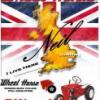



.JPG.9f2ecb26065c66527b0730084ab7fc7a.thumb.jpg.7dc8a04d9a53d44ee2b23f26ee94496f.jpg)



